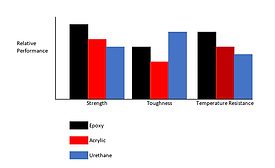Home » bonding
Articles Tagged with ''bonding''
Ask Dr. Dave
Which adhesives can resist serious vibration and shocks?
Read More
PANACOL: Biocompatible UV Adhesive for Soft Plastics
Vitralit UV 7030 is a one-component, solvent-free, UV-curable acrylic adhesive.
October 19, 2021
AVERY DENNISON PERFORMANCE TAPES: Tapes for Acoustically Insulated Tires
The pressure-sensitive tapes help bond noise-absorbing foam and other materials to the inside surface of vehicle tires.
October 14, 2021
Top 5 News that Sticks
Massive Interest in Kraton Acquisition Continues
Kraton’s planned acquisition by DL Chemical continued to hold readers’ interest last week.
October 11, 2021
Strategic Solutions
Assembly with Adhesives
Three key steps must be undertaken when considering the use of adhesives in assembly operations.
October 11, 2021
BOSTIK: Anaerobic Engineering Adhesives
These adhesives offer a number of advantages over mechanical solutions, such as long-term reliability, increased versatility of application, and protection against corrosion.
October 7, 2021
Sponsored Content
Address bonding needs and process flexibility with WACKER’s SEMICOSIL® 9820
September 30, 2021
Case Study
Structural Adhesives are Reaching New Heights with an Innovative Electric Vehicle
Sika serves as the adhesive bonding technology partner for a world record attempt featuring a 100% solar-powered vehicle.
September 28, 2021
Ask Dr. Dave
Bonding Fluoroplastic Parts to Metals
We manufacture PTFE and other fluoroplastic parts. We have been requested to make parts that can be bonded to metals. Is there a good adhesive, some sort of additive to the PTFE, or a surface treatment that we can use?
September 21, 2021
Strategic Solutions
Weighing the Cost Benefit of Complex Design in 3D-Printed OEM Parts
Adhesive bonding opportunities are exponentially increasing with the design complexities of polymer and metal additive manufacturing.
September 10, 2021
Keep the info flowing with our eNewsletters!
Get the latest industry updates tailored your way.
JOIN TODAY!Copyright ©2025. All Rights Reserved BNP Media.
Design, CMS, Hosting & Web Development :: ePublishing














